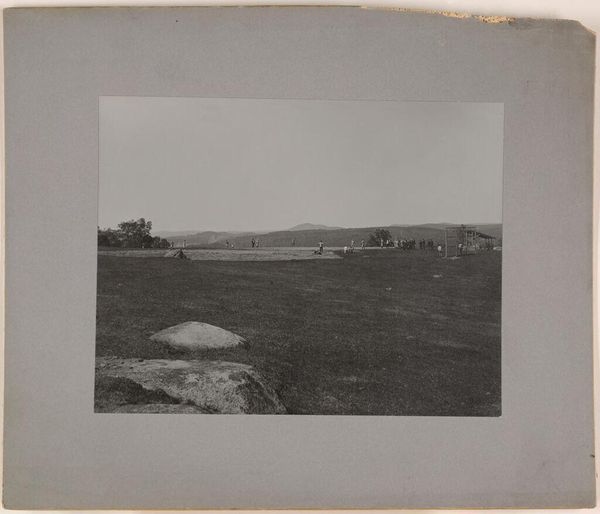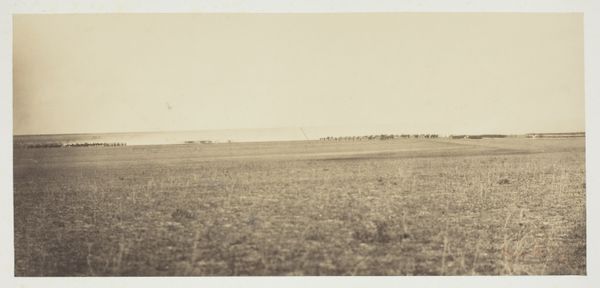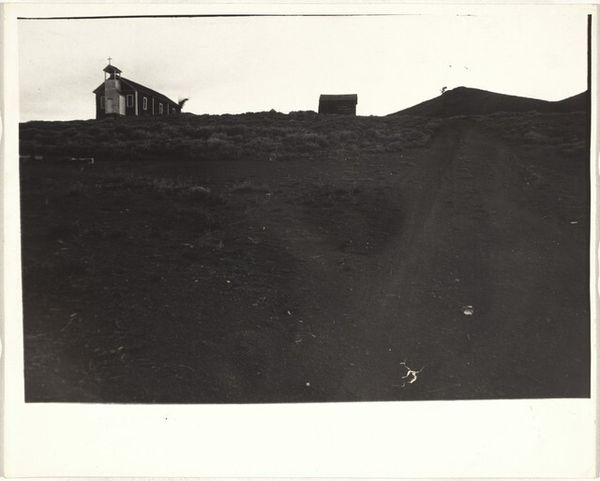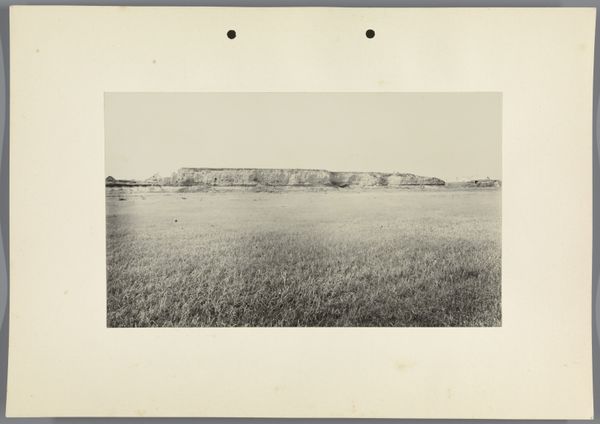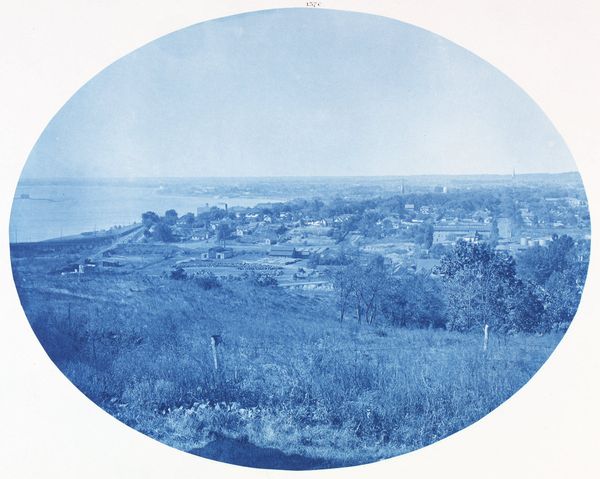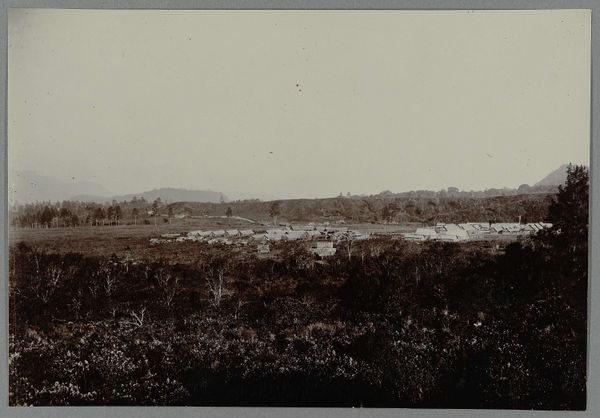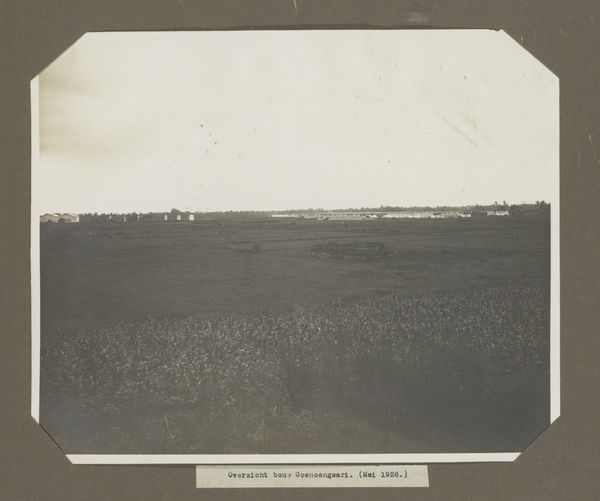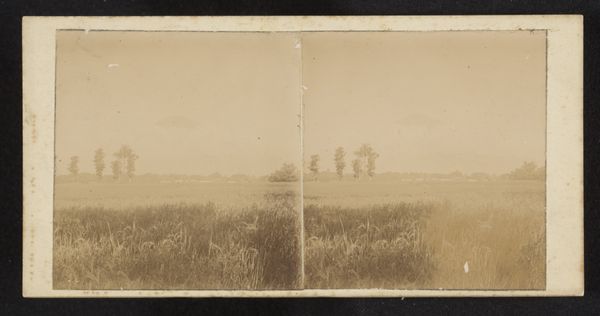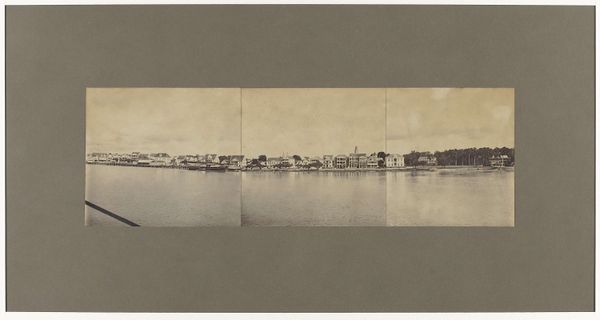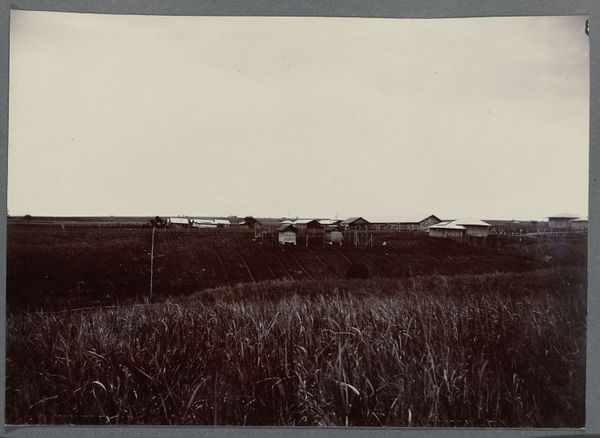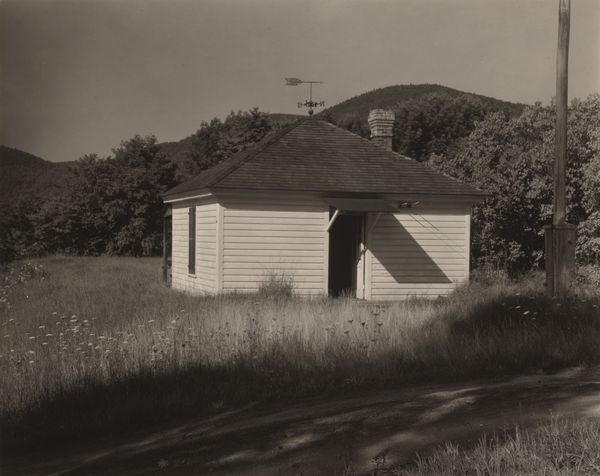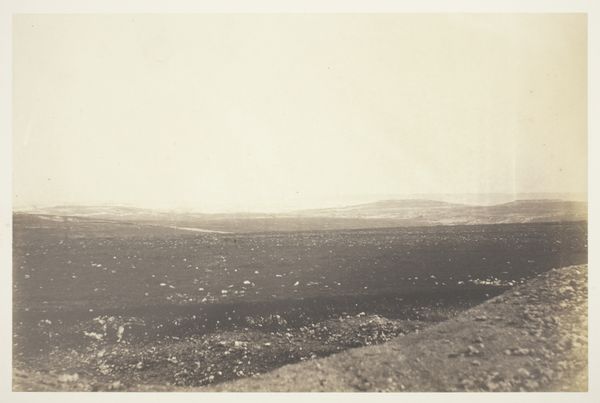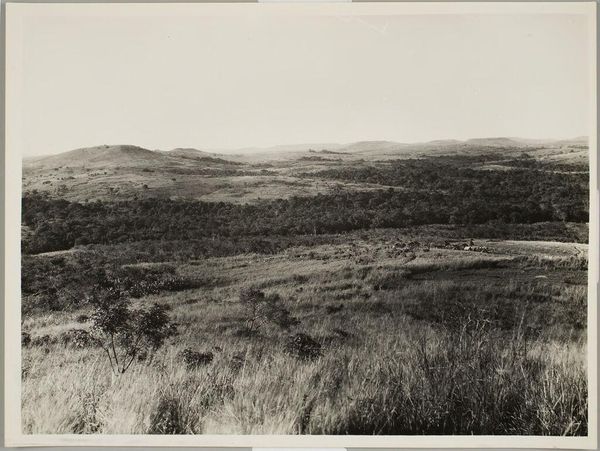![[Looking Toward Marye's Heights, Fredericksburg] by Andrew Joseph Russell](/_next/image?url=https%3A%2F%2Fd2w8kbdekdi1gv.cloudfront.net%2FeyJidWNrZXQiOiAiYXJ0ZXJhLWltYWdlcy1idWNrZXQiLCAia2V5IjogImFydHdvcmtzLzk4MDI3NzlmLTQ5YzktNDFmNS1hZDA1LTg5OWMyYmI3MTk0OS85ODAyNzc5Zi00OWM5LTQxZjUtYWQwNS04OTljMmJiNzE5NDlfZnVsbC5qcGciLCAiZWRpdHMiOiB7InJlc2l6ZSI6IHsid2lkdGgiOiAxOTIwLCAiaGVpZ2h0IjogMTkyMCwgImZpdCI6ICJpbnNpZGUifX19&w=3840&q=75)
[Looking Toward Marye's Heights, Fredericksburg] 1864
0:00
0:00
photography, gelatin-silver-print
#
black and white photography
#
war
#
landscape
#
outdoor photograph
#
outdoor photo
#
black and white format
#
photography
#
black and white
#
gelatin-silver-print
#
monochrome photography
#
monochrome
#
realism
#
monochrome
Copyright: Public Domain
Editor: This is Andrew Joseph Russell's gelatin-silver print, “[Looking Toward Marye's Heights, Fredericksburg]”, from 1864. The black and white tones really give a sense of starkness to this landscape. What do you see in this piece? Curator: The composition here is particularly compelling. Note the subtle variations in grayscale, establishing depth. The photographic process itself becomes significant; the chemical reactions capturing light and shadow offering a unique visual texture. We can consider how Russell's methodology shapes our interpretation. Editor: The framing is also interesting; it almost feels unbalanced with more of the image area on the left side of the double panel. Does that contribute to the message? Curator: Precisely. The photograph invites close examination. Notice the structural elements—the way the lines of the fields intersect, leading the eye towards the horizon. What philosophical or semiotic frameworks might illuminate the artist’s choices here? Consider Barthes' concepts about photography and truth... Editor: So you are suggesting that Russell’s approach encourages us to analyze beyond a simple visual record? Curator: Indeed. The composition becomes a complex sign system. It demands decoding of each structural component to understand Russell's unique perspective on landscape. Every element informs the totality. Editor: This has broadened my view significantly; focusing on form opens avenues of interpretation that historical context alone might not reach. Curator: And for me, your questioning reminds me to not overlook what may be initially invisible when we examine the work's materiality, and its intrinsic aesthetic characteristics.
Comments
No comments
Be the first to comment and join the conversation on the ultimate creative platform.
